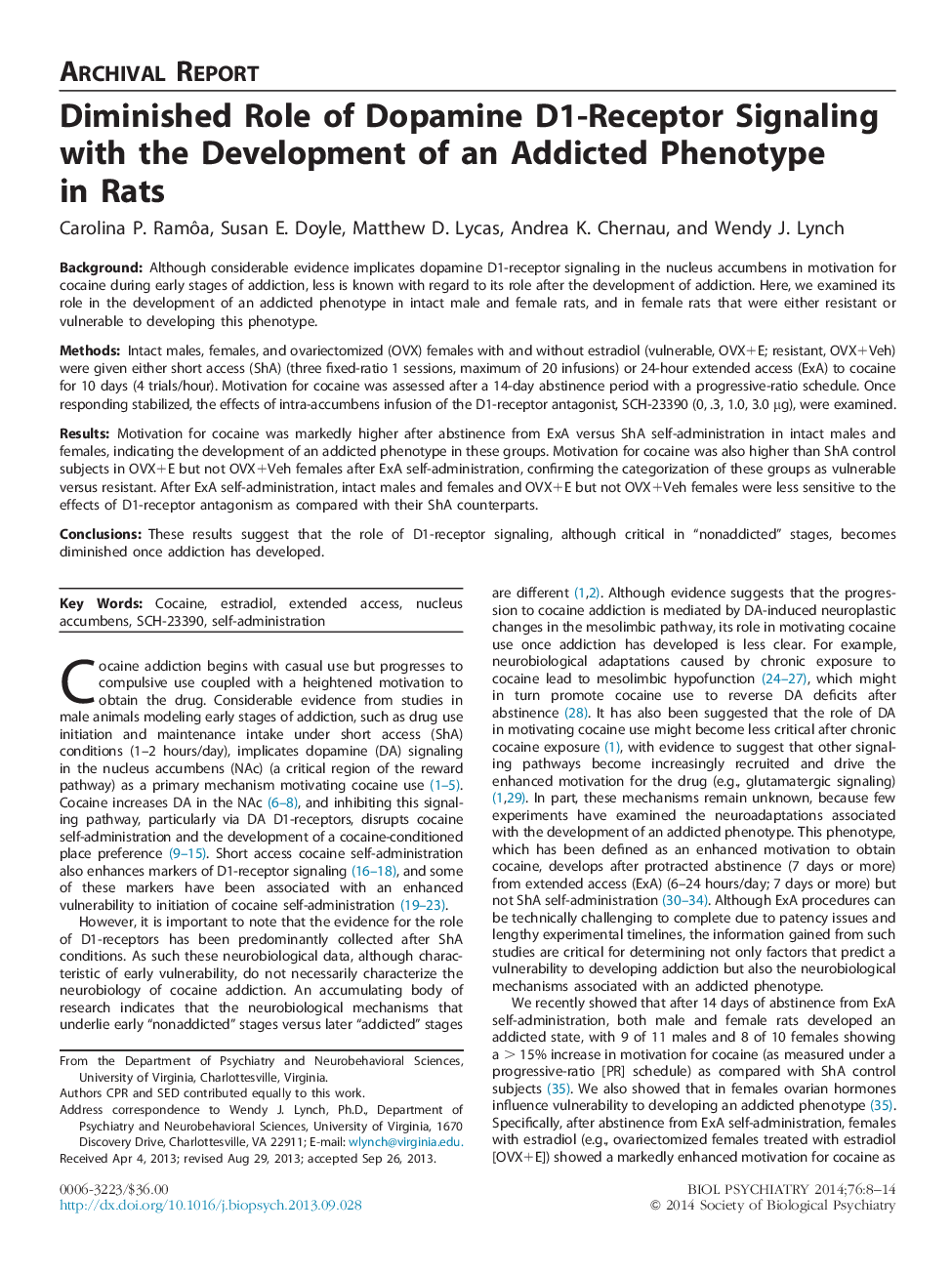| Article ID | Journal | Published Year | Pages | File Type |
|---|---|---|---|---|
| 6227241 | Biological Psychiatry | 2014 | 7 Pages |
BackgroundAlthough considerable evidence implicates dopamine D1-receptor signaling in the nucleus accumbens in motivation for cocaine during early stages of addiction, less is known with regard to its role after the development of addiction. Here, we examined its role in the development of an addicted phenotype in intact male and female rats, and in female rats that were either resistant or vulnerable to developing this phenotype.MethodsIntact males, females, and ovariectomized (OVX) females with and without estradiol (vulnerable, OVX+E; resistant, OVX+Veh) were given either short access (ShA) (three fixed-ratio 1 sessions, maximum of 20 infusions) or 24-hour extended access (ExA) to cocaine for 10 days (4 trials/hour). Motivation for cocaine was assessed after a 14-day abstinence period with a progressive-ratio schedule. Once responding stabilized, the effects of intra-accumbens infusion of the D1-receptor antagonist, SCH-23390 (0, .3, 1.0, 3.0 µg), were examined.ResultsMotivation for cocaine was markedly higher after abstinence from ExA versus ShA self-administration in intact males and females, indicating the development of an addicted phenotype in these groups. Motivation for cocaine was also higher than ShA control subjects in OVX+E but not OVX+Veh females after ExA self-administration, confirming the categorization of these groups as vulnerable versus resistant. After ExA self-administration, intact males and females and OVX+E but not OVX+Veh females were less sensitive to the effects of D1-receptor antagonism as compared with their ShA counterparts.ConclusionsThese results suggest that the role of D1-receptor signaling, although critical in “nonaddicted” stages, becomes diminished once addiction has developed.
